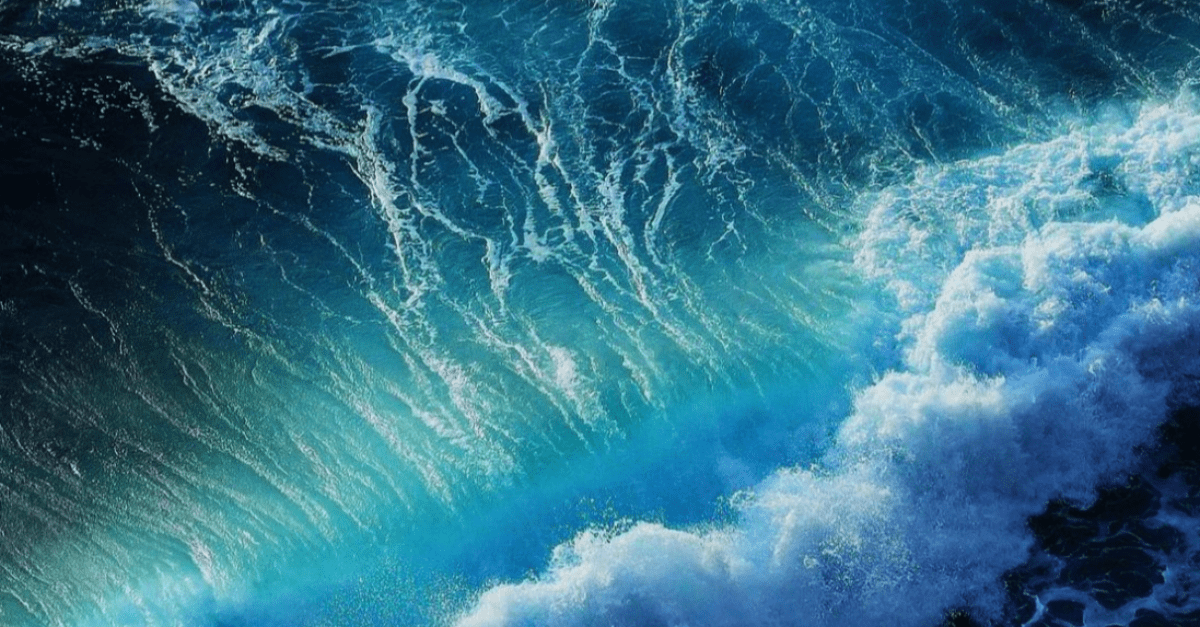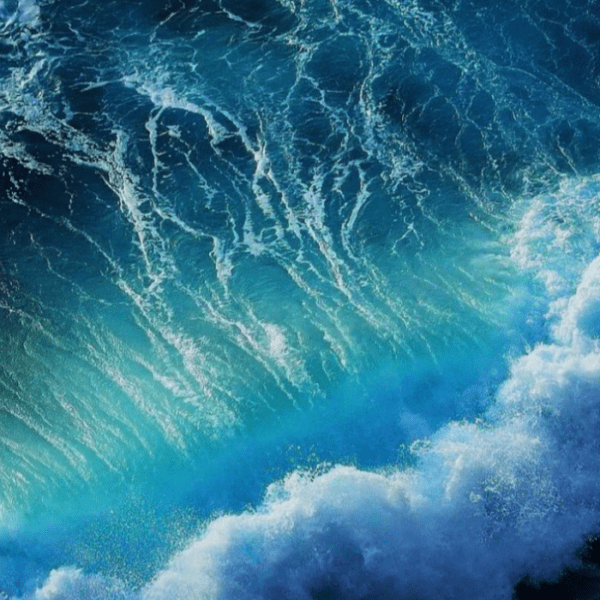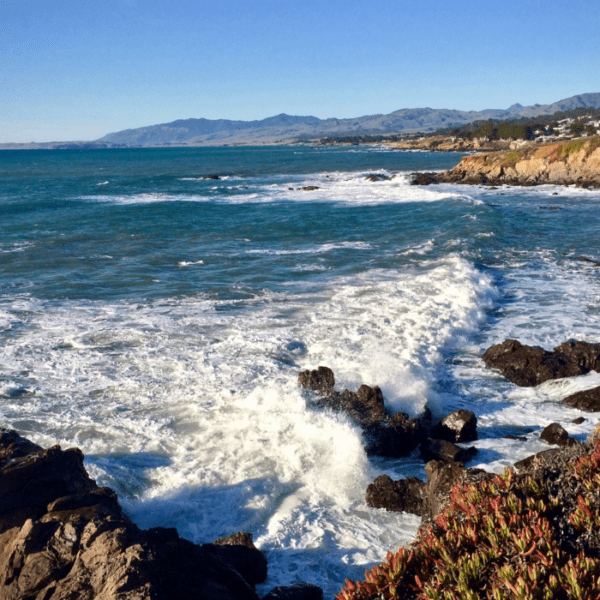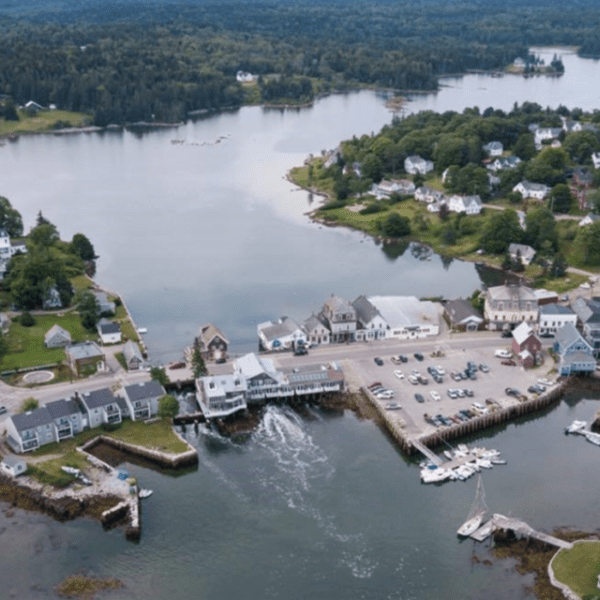Marine energy technologies are currently undergoing rapid innovation, and several systems are either nearing, or are at, commercialization.
Two U.S. companies, C-Power and Oscilla Power, have shipped wave energy converter (WEC) devices to Oahu, Hawaii, and they are waiting for the ideal weather window to deploy at the United States Navy’s Wave Energy Test Site (WETS).
Deploying C-Power and Oscilla Power’s devices at WETS is progress towards the commercialization of marine energy devices in the U.S. while bringing the electricity grid one step closer to being 100% renewable by 2035 – a target set by the Executive Branch of the U.S. government.
The two technologies being deployed at WETS are wave energy converters. While C-Power and Oscilla Power utilize different designs to harness wave energy, they both hope to accomplish the same goal at WETS; namely, demonstrate the viability of U.S. technology to convert kinetic energy from waves to electric power.
In a 2021 study, the National Renewable Energy Laboratory (NREL) found that the technical resource potential of marine energy in the U.S. was estimated to be 2,300 terra-watt hours (TWh) per year, which is equivalent to 57% of the electricity generated in the U.S. in 2019. Using just one-tenth of marine energy resources would provide enough electricity to power 22 million homes.
The upcoming deployments will not only test the viability of generating electricity from harnessing waves, but these devices will become information points to draw on for future deployments. As more devices are deployed, more information on the efficiency of these technologies in the water, and their interaction with the surrounding ecosystem, will be gathered. This information could help inform analysis of viable site selection, resource characteristics, offshore remote power market viability, and utility-scaling potential.
Following deployment, each company has plans for when and where they will be testing, as well as proving, either the next generation, or next market, for their devices.
POWERHOUSE spoke with C-Power and Oscilla Power to learn more.
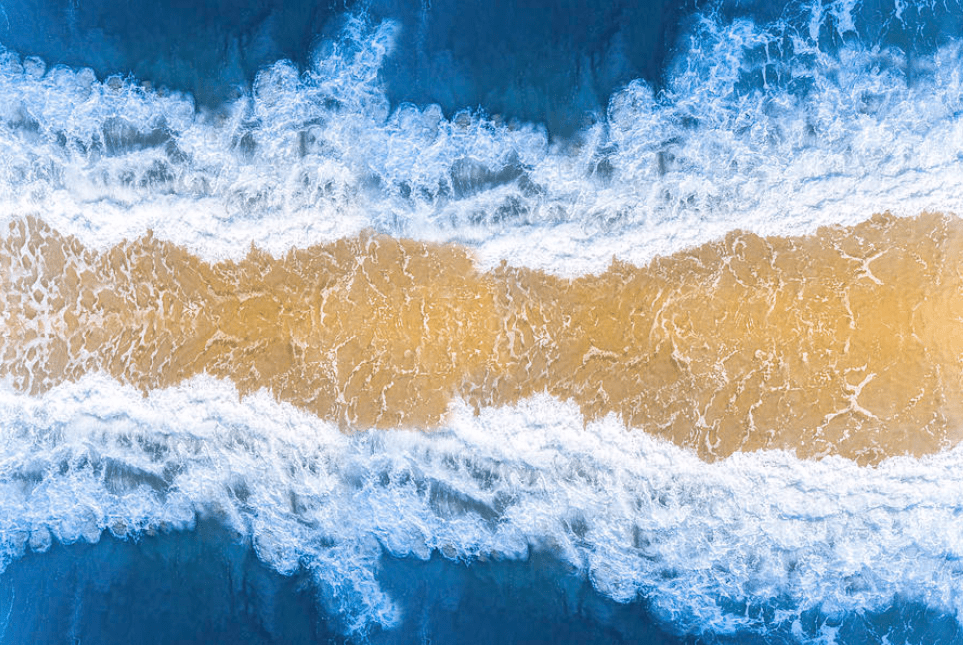
POWERHOUSE: How did your organization start, and what was the original mission?
C-Power: The company started as a spin out from Oregon State University. The original mission for the company was utility scale energy systems.
In 2016, though, we did a project with the University of Washington Applied Physics Lab, which was a DARPA project. It was a completely different target than the utility scale systems we had been working on. Opposite in scale, it was a 100-Watt system to be used for a specific purpose.
This work opened our eyes to the need for lower power systems, or what the U.S. Department of Energy (DOE) would currently call “powering the blue economy,” in that, there’s a need for power in the ocean. The ocean is a power desert, so you can’t do the things that you want in the ocean without a crude vessel or expensive infrastructure. Wave energy provides a wonderful solution to that lack of power availability.
We have a market execution strategy that has us starting in the offshore remote power market, and then we move our way to diesel generation replacement. From there, we provide village and remote power, rural power, and then to terrestrial grid, and, finally, utility scale.
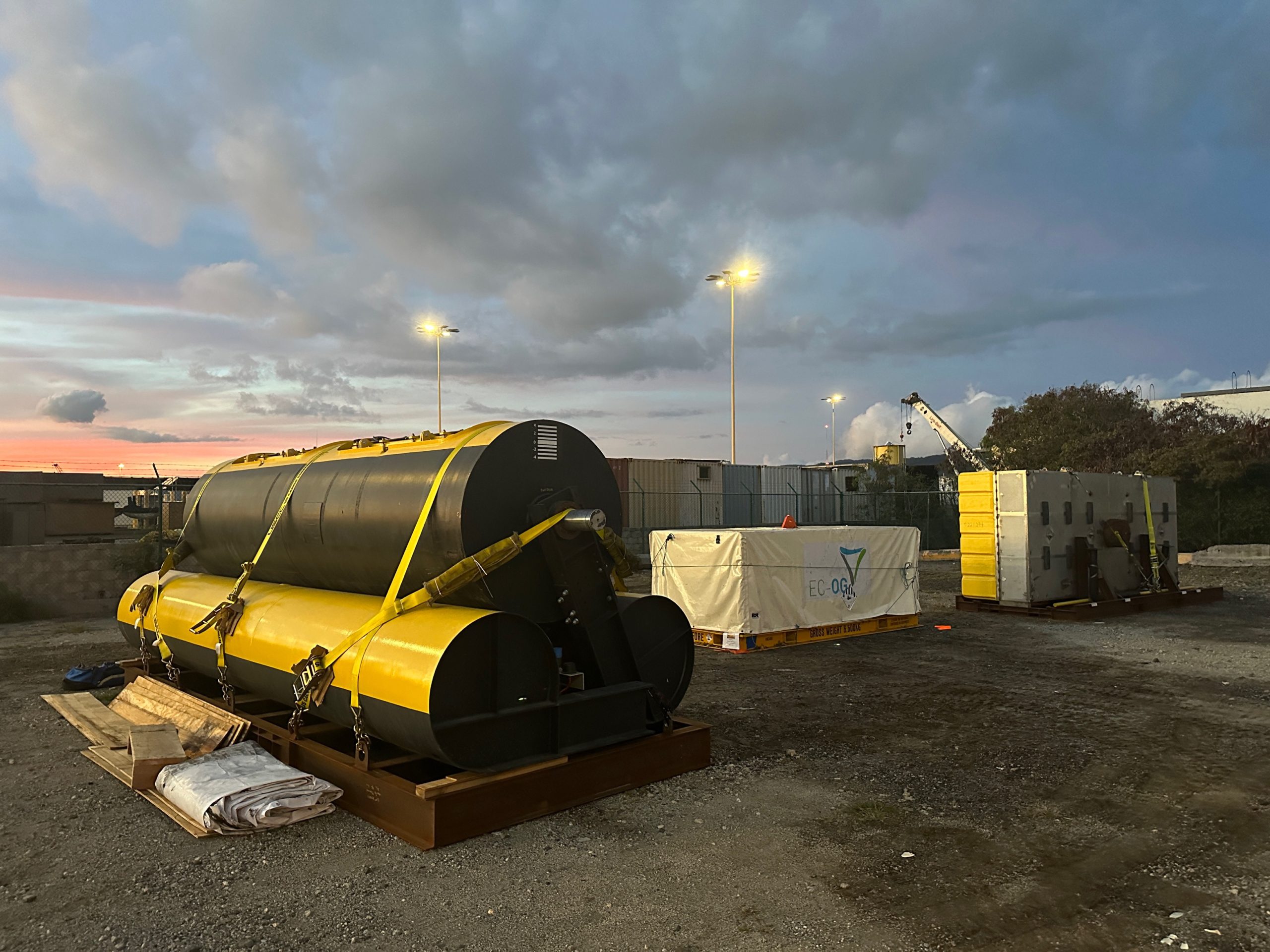
C-Power’s SeaRAY, halo, and heave plate awaiting deployment.
Oscilla Power: The founders started with the premise, one that has been subsequently proven, that solar and wind alone will not be sufficient for a 24/7, near-100% renewable energy supply even with reasonable capacity of storage installed on the grid.
In fact, projections from the Energy Information Administration (EIA) have shown that even if solar and wind continue to follow similar growth patterns, the world will still burn more fossil fuels in 2050 than in 2020 due to the massive projected increase in demand.
The only viable solution is to find other sources of clean energy that work in a complementary manner with existing renewables. We founded Oscilla Power because we believe that wave energy, when done correctly, can fill that gap in a number of high energy-consumption locations around the world, such as the West Coast of the United States.
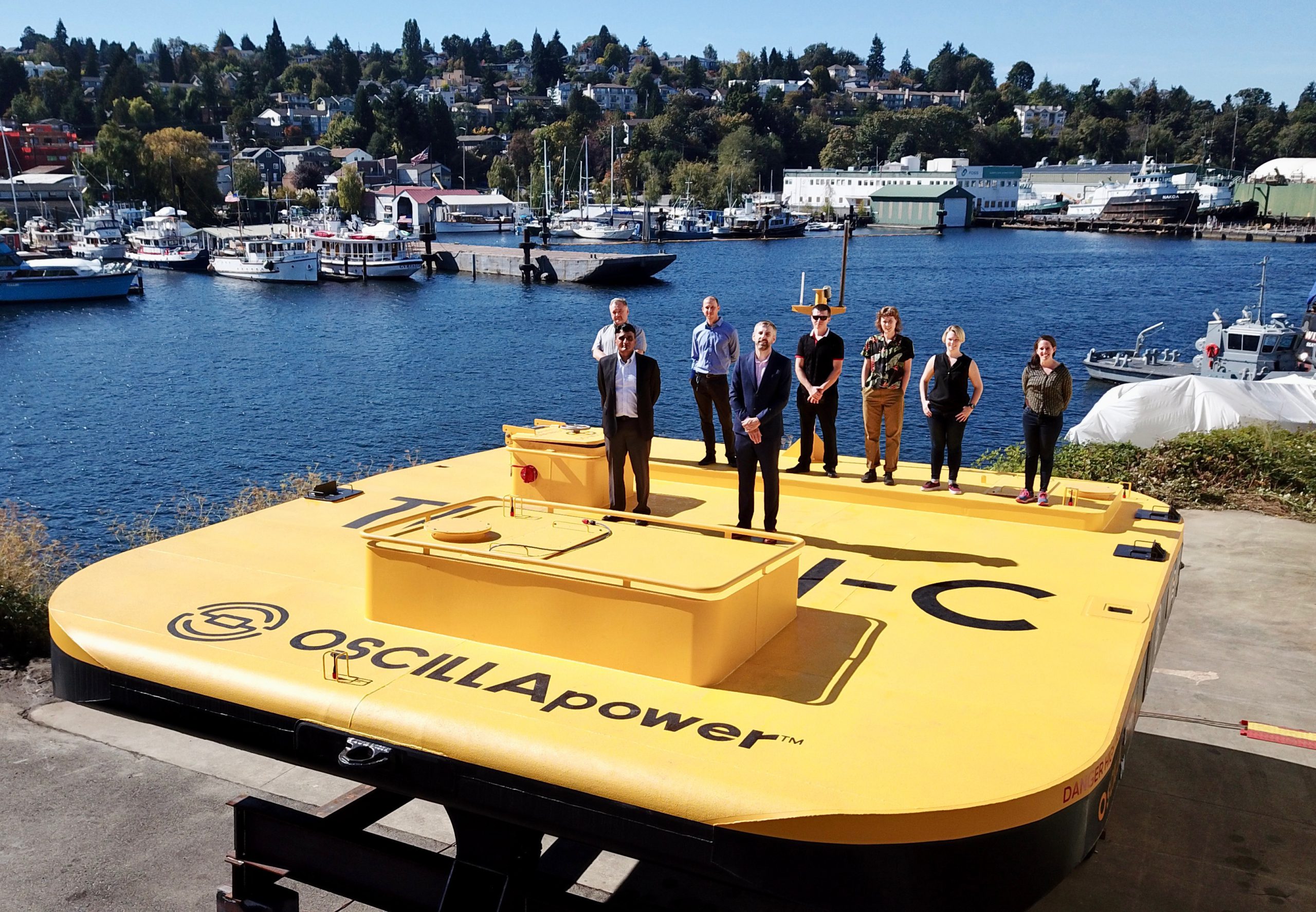
The Oscilla Power team poses for a photo on the Triton WEC.
POWERHOUSE: How do your different devices generate electricity?
C-Power: The point of both the SeaRay and Stingray devices is to create a simple, reliable, cost effective, fit-for-purpose technology. They’re both based on the same essential motion or process which converts wave energy into usable forms of energy, mainly electricity at the moment. But, eventually, hydrogen, as you can begin to electrolyze hydrogen in the ocean, and even terrestrial, from a cost-effective basis.
Specifically, we harness both the heave and the surge forces within every wave, and we convert those two linear forces into rotary motion. If you think about heave, heave is when you’re at the beach, in the ocean, and the force of a wave lifts you up; the surge is what pushes you back to shore.
Our ability to convert those forces into a direct drive system and convert them into usable energy is the hallmark of our system. Very early on we decided to take a similar pathway to wind energy in terms of using rotary generation technologies.
Our generation technology is well understood and established. Now, it needs to be improved and optimized to deal with the characteristics of ocean energy. The ocean moves at a very slow speed and a very high torque. That slow speed and high torque requires upgrades to how an offshore wind turbine works. Our technology works in a similar way, but it’s the waves that move the blades.
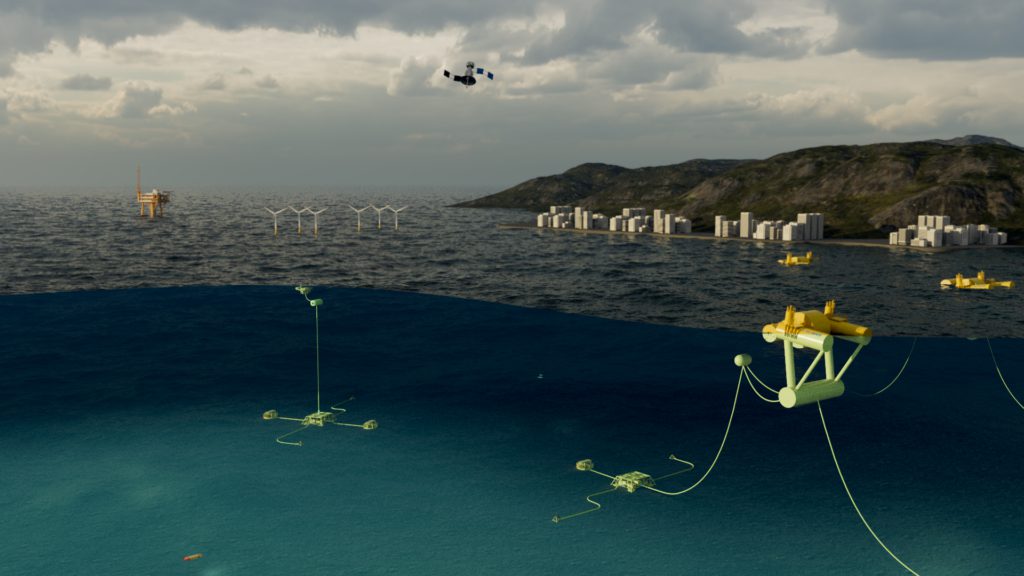
Animated rendering of C-Power’s wave energy converters in action, demonstrating how the interconnected systems work.
Oscilla Power: Our Triton architecture minimizes the levelized costs of grid-scale electricity by providing the best combination of high energy capture and conversion across a wide range of ocean conditions while ensuring high reliability, the ability to survive extreme waves, and low capital/installation costs.
Our systems are what is known as a multi-mode, two-body, point absorber. We have a floating hull with an optimal shape on the surface, which is connected to a reaction structure suspended below on three tendons. This arrangement means that the Triton can capture energy from all the different movements of the ocean, which is important to maximize efficiency.

Animated rendering of Oscilla Power’s Triton Wave Energy Converter deployed.
Each tendon is connected to a unique hydraulic/electric drivetrain, one that can not only capture and convert energy under normal operating conditions but can also help to shed energy in extreme conditions. When the waves become too severe, the system has the ability to submerge for protection where it will continue to produce power, even in the most extreme conditions, such as a 75ft wave.
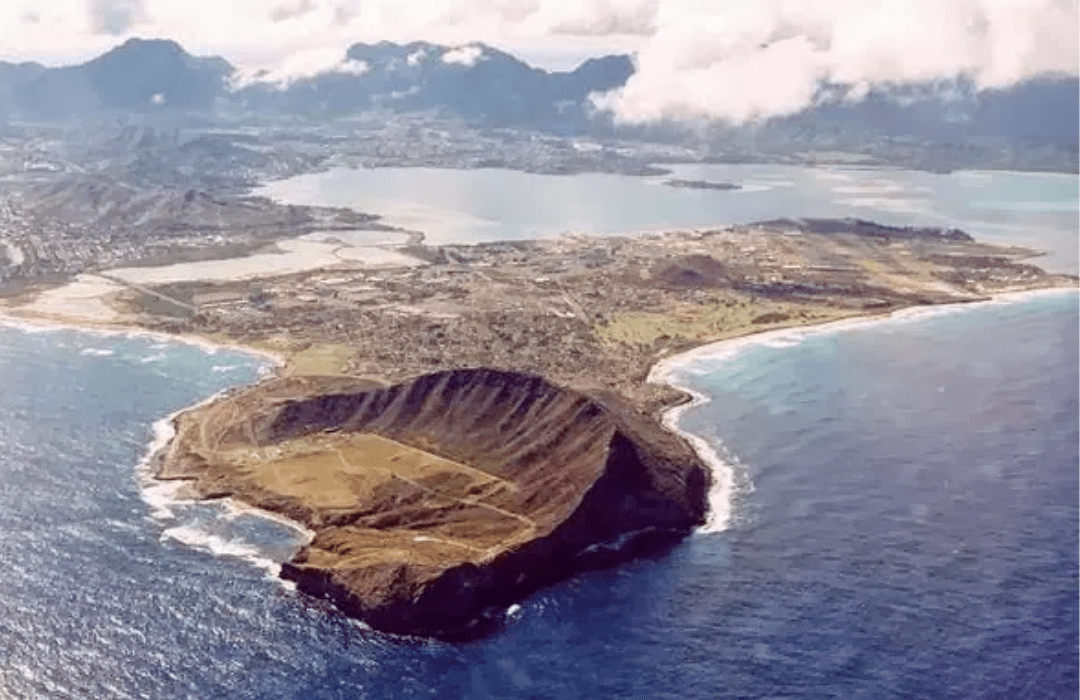
The U.S. Navy Wave Energy Test Site (WETS) is located north of Mōkapu Peninsula (pictured here), Marine Corps Base Hawaii, Kaneohe Bay, O’ahu, Hawai’i
POWERHOUSE: Can you walk us through what the process at WETS will be like?
C-Power: We are currently prepping for deployment, and all the components are present. I’m referring to our SeaRay AOPS, or autonomous offshore power system. AOPS is meant to provide a sufficient amount of power required by whatever it’s supporting. In this example that could be a subsea robot, a sensor set, or a piece of operating equipment in the ocean.
Our device is not just a wave power system, and it’s not just a device floating on the surface, which ours does do, but it’s generating as much energy as it can. We’ve created a holistic system that involves power generation, energy storage, energy distribution, asset management, and station-keeping to create a holistic solution for what our customers need.
Currently, we are going through the commissioning steps – i.e., the preparation steps to integrate all of the systems. After that is done, we’ll integrate the first supported asset, which is a Biosonics Environmental Monitoring System, which is a seafloor device that looks up towards the water surface. I would simply describe it as an ultrasound system for environmental monitoring, such as marine animal monitoring, intrusion detection, and security.
We’ll do that integration with the Biosonics system on land. Then we will do a dry run of the deployment operation in the Harbor in Hale’olou. Afterwards, we will look for a weather window in which to deploy. Mother Nature will be the ultimate Arbiter when it comes to determining when the system gets deployed in the water.
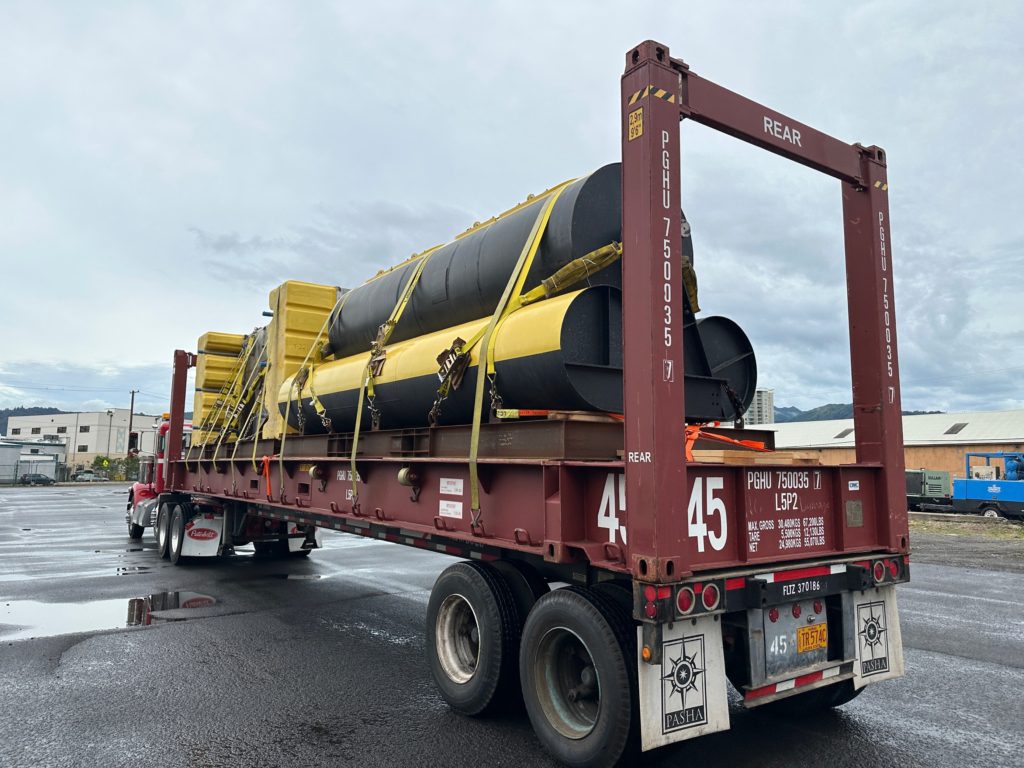
C-POWER’s wave energy device loaded onto a truck, as it transports the technology to WETS.
Oscilla Power: We’re very appreciative of the Department of Energy, the U.S. Navy, and the other investors in this platform.
An important part of our WETS deployment will be to demonstrate our simple and innovative installation process. The Triton-C system will be towed to the WETS site and will use its drivetrains to install its reaction structure to the correct depth. This allows us to complete the operation with only a simple tug.
The deployment in Hawaii will qualify our first commercial product – the 100 kW Triton C, which is a critical stepping stone in the process of us getting to commercial, utility-scale wave power with a levelized cost of energy (LCOE) on par with other renewables.
In 2023, in parallel, we will be completing the de-risking of our utility-scale (1 megawatt rated) system with a subscale deployment off the coast of Maine, and we are planning to start construction of the first unit of this system in India in 2024.
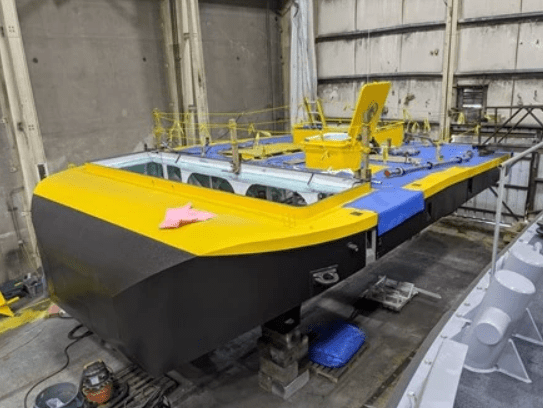
Oscilla Power’s Triton WEC after completing the painting of the hull.
POWERHOUSE: How do you see this deployment helping advance the U.S. marine energy sector?
C-Power: It’s always hard to gauge how we affect the industry as a whole. I think our contribution to the sector, and hopefully the contribution that we will demonstrate in Hawaii, is really the attractiveness of the market and that ocean energy is a viable solution to nontraditional problem.
Offshore, remote mini grids can’t be serviced with just wind or solar; you need a third resource, ocean energy, to effectively attack the market.
The value of the early demonstrations and pilots show the potential opportunity, and the attraction to the project by our partners and customers validates the commercial appeal of the offshore, remote power market.
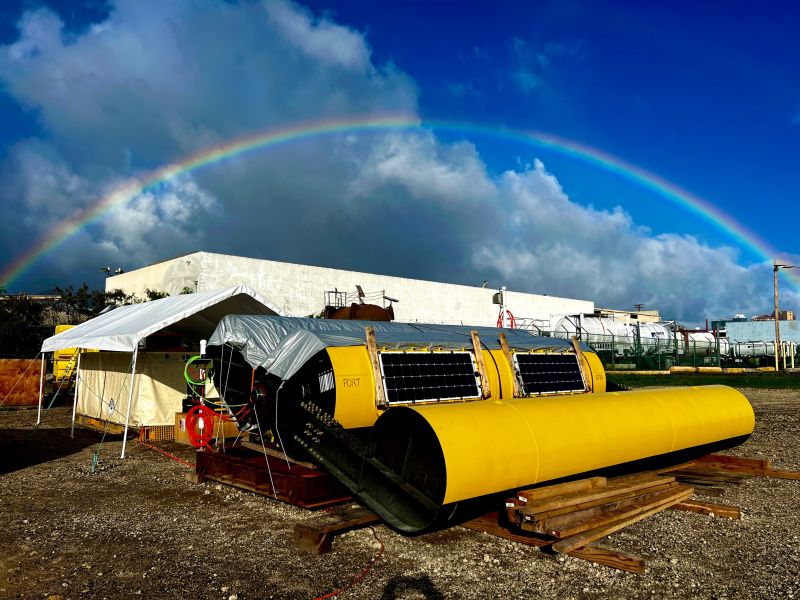
C-Power’s SeaRAY at WETS in Hawaii.
Oscilla Power: It’s one thing to test hardware in a lab, or even in the open water, but for us to test the full spectrum of a commercial deployment, including the natural environment with grid connectivity and consumer use, is a huge deal.
Not only will we get significant data about performance, but we will also be able to demonstrate viability, which will be critical in securing the needed funding from both the public and private sectors that will allow us to continue developing our platform.

Oscilla Power’s Triton WEC in Hawaii.
FOR MORE INFORMATION
To learn more about C-Power and Oscilla Power, please visit their respective websites here: C-Power and Oscilla Power.



